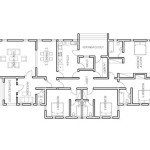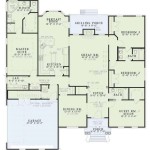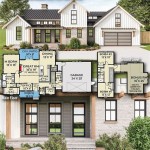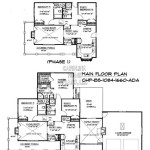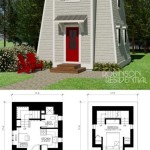How to Design a Floor Plan for Free
Designing a floor plan involves creating a scaled diagram that illustrates the arrangement of rooms, walls, doors, windows, and other physical features within a building or space. This process is fundamental for various purposes, including residential remodeling, new construction projects, and interior design planning. Although professional architects and designers often utilize specialized software for this task, it is entirely possible to design a floor plan for free using various accessible tools and techniques.
The ability to create a floor plan without incurring costs is particularly useful for individuals undertaking small-scale projects, homeowners exploring renovation options, or students learning about architectural design. By leveraging free online platforms, readily available materials, and fundamental design principles, a functional and informative floor plan can be developed.
Understanding Basic Floor Plan Elements
Before embarking on the floor plan design process, it is crucial to grasp the core components that comprise a successful and accurate representation. These elements define the structure and functionality of the space being planned.
Walls: Walls define the boundaries of each room and the overall building. They are typically represented by thick, solid lines on the floor plan. The thickness of the lines should be consistent throughout the drawing, unless indicating a structural wall with a different thickness. The placement of walls dictates the flow of movement and defines the spatial relationships within the floor plan.
Doors: Doors represent the access points between rooms and to the exterior. They are typically illustrated as an arc showing the swing direction and a line indicating the door's position when closed. The type of door (e.g., hinged, sliding) should be clearly indicated, as this impacts space planning and functionality.
Windows: Windows are represented by one or more parallel lines within the wall, indicating their location and size. The type of window (e.g., casement, double-hung) is not always explicitly indicated on a basic floor plan but can be noted in the accompanying documentation. Window placement is critical for natural light and ventilation.
Fixtures: Fixtures include elements like kitchen appliances (refrigerators, stoves, dishwashers), bathroom fixtures (toilets, sinks, showers), and built-in features (fireplaces, cabinets). These are represented by standard symbols or simplified shapes. Precise placement of fixtures is important for functionality and adherence to plumbing and electrical codes.
Dimensions: Dimensions are crucial for accurately representing the size of rooms and features. They are typically indicated by lines with arrows at each end, showing the measured length or width. Dimensions should be clearly legible and consistently placed throughout the floor plan. Accurate measurements are essential for construction, material estimation, and furniture placement.
Scale: The scale determines the relationship between the drawing and the actual dimensions of the space. A common scale for residential floor plans is 1/4 inch = 1 foot, meaning that every 1/4 inch on the drawing represents 1 foot in reality. Maintaining a consistent and accurate scale is vital for the floor plan to be useful for construction and planning.
Methods for Creating Free Floor Plans
Several methods are available for creating floor plans without incurring costs. These methods range from traditional hand-drawing techniques to utilizing free online software platforms.
Hand Drawing: The most basic method involves using graph paper, a ruler, a pencil, and an eraser. This method is suitable for simple floor plans and smaller projects. The initial step involves accurately measuring the existing space or defining the desired dimensions for a new build. The measurements should be recorded carefully and used to create a scaled drawing on the graph paper. Each square on the graph paper can represent a specific unit of measurement (e.g., 1 square = 1 foot). Walls, doors, windows, and fixtures can then be drawn to scale within the outlined space. This method requires precision and attention to detail but allows for flexibility and customization.
Free Online Floor Plan Software: Several websites offer free versions of their floor plan software. These platforms typically provide drag-and-drop interfaces, pre-designed templates, and libraries of symbols for walls, doors, windows, and fixtures. While free versions may have limitations in terms of features or storage capacity, they often provide sufficient functionality for creating basic floor plans. Examples of such platforms include:
RoomSketcher Free: RoomSketcher's free plan allows users to create basic 2D floor plans with limitations on project numbers and features. It is user-friendly and suitable for simple residential projects.
Floorplanner: Floorplanner offers a free version with limited project access. It features a drag-and-drop interface and a variety of furniture and fixture options.
Sketchup Free: While primarily a 3D modeling tool, Sketchup Free can also be used to create 2D floor plans. It requires a bit more learning but offers greater flexibility and control over the design.
When using online software, it is essential to start with accurate measurements of the space. Input these measurements into the software and then begin adding walls, doors, windows, and fixtures. Most platforms allow for adjusting the scale and dimensions of elements, ensuring accurate representation.
Utilizing Existing Templates: Many websites and online resources offer free floor plan templates that can be downloaded and customized. These templates can be a useful starting point for those unfamiliar with floor plan design or those seeking inspiration. Templates can be modified using hand-drawing techniques or imported into free online software for further customization. The selection of a template should align with the desired style and functionality of the space.
Key Considerations for Effective Floor Plan Design
Regardless of the method used, several key considerations should be taken into account to ensure the floor plan is functional, efficient, and aesthetically pleasing.
Traffic Flow: Optimizing traffic flow is crucial for creating a comfortable and functional space. Consider the movement patterns of occupants and ensure that pathways are clear, direct, and unobstructed. Avoid creating bottlenecks or forcing people to pass through one room to access another unnecessarily. The placement of doors and hallways should facilitate smooth transitions between different areas of the house.
Space Planning: Space planning involves arranging furniture, fixtures, and other elements within each room to maximize usability and minimize wasted space. Consider the function of each room and the activities that will take place there. For example, a living room should have ample seating and a clear view of the television or fireplace. A kitchen should have an efficient layout with adequate counter space and storage. Furniture arrangement should be carefully considered to ensure a comfortable and functional environment.
Natural Light and Ventilation: Maximizing natural light and ventilation is important for creating a healthy and comfortable living environment. Orient the floor plan to take advantage of sunlight and prevailing winds. Place windows strategically to allow for cross-ventilation and minimize the need for artificial lighting. Consider the impact of window placement on privacy and glare. Incorporating skylights or light wells can also enhance natural light in interior spaces.
Accessibility: Consider the needs of all occupants, including those with mobility limitations. Ensure that doorways are wide enough for wheelchairs or walkers. Provide clear pathways and minimize the number of steps or changes in elevation. Incorporate features such as grab bars in bathrooms and ramps instead of stairs where possible. Designing for accessibility enhances the usability and safety of the space for everyone.
Adherence to Building Codes: While designing the floor plan, it is crucial to be aware of local building codes and regulations. These codes govern various aspects of construction, including fire safety, structural integrity, and accessibility. Ensure that the floor plan complies with all applicable codes to avoid potential problems during construction or renovation. Consult with local building officials or a qualified professional if unsure about specific code requirements.
Future Needs: Consider the long-term needs of the occupants when designing the floor plan. Anticipate potential changes in lifestyle or family size and design the space to accommodate these changes. For example, consider adding extra bedrooms or bathrooms or designing flexible spaces that can be adapted for different uses over time. Planning for future needs can help ensure that the floor plan remains functional and relevant for years to come.
By carefully considering these factors and utilizing the free methods available, designing a floor plan without incurring excessive costs is attainable. While professional assistance may be required for complex projects or structural alterations, these techniques provide a solid foundation for creating a functional and aesthetically pleasing space.

Blueprint Maker Free App

Floor Plan Creator Planner 5d

Free House Design Home And Plans

15 Simple Floor Plan Makers Free To Use Owner S

6 Best Free Room Design Floorplan Moving Com

6 Best Free Websites For Floor Plan Design

11 Best Free Floor Plan For 2024

Free Floor Plan Layout Apps Reviewed Greenhouse Studio

Floor Plan Creator Planner 5d

Homebyme Archives Free House Plan And Apartment
Related Posts


